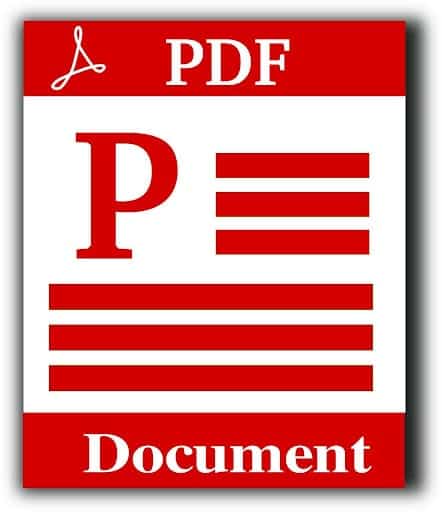Need a faster way to collect data from files or websites? Python can help you do that with ease. It’s a powerful tool that turns messy tasks into simple scripts.
Whether you’re pulling data from a PDF, spreadsheet, or the web, Python has the right tools for the job. In this guide, you’ll learn practical tips to make data extraction easier and more efficient.
Ready to save time and boost your skills? Let’s dive in and explore how Python can make data extraction a breeze.
Understand the Data You Need
Before you start writing code, take time to understand the type of data you want to collect. You should know where the data is coming from. It could be on a website, in a spreadsheet, in a PDF, or even hidden inside a large text document. You should also check if the data is structured, like in a table, or unstructured, like a paragraph of text.
Knowing the format, location, and purpose of the data helps you make better choices when selecting tools and writing code. When you clearly understand what you need, the whole process becomes much smoother and more accurate.
Use Built-in Tools First
Sometimes, the simplest tools are already included in Python. Before reaching for an external library, ask yourself if the built-in tools are enough. For example, you can read and process text files using Python’s open function and string methods. You can split lines, search for keywords, and filter results using only what comes with Python.
This approach keeps your script light and easy to maintain. It also avoids the risk of version conflicts or needing to install unnecessary packages. Always start simple, then move to advanced tools when you really need them.
Automate Repetitive Tasks
If you find yourself doing the same task over and over, it’s a good idea to automate it. Python is perfect for automating things like opening files, reading data, cleaning it up, and saving results. You can use loops to go through folders of files, and you can create functions to handle common actions.
For example, if you have 100 Excel files that need processing every week, a Python script can open them one by one, extract what you need, and combine everything into one final file. You can even schedule this script to run automatically every day or week using tools like Task Scheduler on Windows or cron jobs on Linux.
Handle Errors Properly
In real-world situations, data is often messy or incomplete. Files might be missing, websites may return errors, or formats may change. If your code crashes every time something goes wrong, it becomes unreliable. That’s why it’s important to handle errors properly.
You can use try and except blocks to catch errors and decide what to do when they happen. For example, if a web request fails, your code can print a message and try the next URL instead of stopping. Good error handling makes your script strong and more useful in the long term.
Extracting Text from PDFs
Start by understanding the layout of the PDF you want to work with. Use Python scripts to read and process the content in small chunks. Always test your code on a few pages before running it on the whole file. When learning how to extract text from pdf python, keep your code simple and organized.
Handle errors early to avoid issues with unreadable pages. Clean the extracted text to remove extra spaces or unwanted symbols. Save your results in a readable format like CSV or plain text for easy access.
Clean Your Data
Raw data is rarely perfect. It often contains empty rows, incorrect values, or unnecessary spaces. Cleaning the data is a key step that should not be skipped. You can remove missing data, fix errors, and organize values using string methods or tools like pandas.
For example, you may need to remove rows with missing fields, trim extra spaces, or convert all letters to lowercase for consistency. This step helps avoid problems in later stages like data analysis or reporting. Clean data leads to better results and fewer bugs in your code.
Use Regular Expressions for Pattern Matching
Sometimes, the data you need is hidden inside a long block of text. You might be looking for phone numbers, email addresses, or dates. Regular expressions can help you find these patterns quickly. Python has a built-in module called re that allows you to search for text using pattern rules.
It might seem hard at first, but regular expressions are very powerful. For example, you can use a pattern to find all email addresses in a document. Once you learn the basics, you can extract very specific data from a variety of sources. This is especially useful for unstructured data.
Save Your Data in the Right Format
After you collect and clean your data, you need to decide how to store it. The format you choose should match your future needs. If you plan to open it in Excel, then CSV is a good choice. If your data has a nested structure, JSON might be better. If you want to build a small database, you can use SQLite.
Saving the data in the right format makes it easier to share, analyze, or use in other programs. Python makes it easy to write files in all these formats. For example, pandas has built-in support for saving DataFrames as CSV, Excel, or JSON files with just one line of code.
Test and Improve Your Code
Once your script works, don’t stop there. Test it with different types of data to make sure it handles all situations. Try using broken files, unexpected formats, or large amounts of data. This helps you find problems before your users do.
Also, check how fast your code runs. If it feels slow, look for ways to improve it. Avoid repeating the same operation many times. Use efficient libraries and methods.
Learn More About Utilizing Python
Python makes data extraction simple and effective. With the right tools and approach, you can pull data from many sources quickly. Always clean your data and test your code to avoid errors.
Use libraries that match your data type for better results. By following these tips, you can work smarter and save valuable time.





